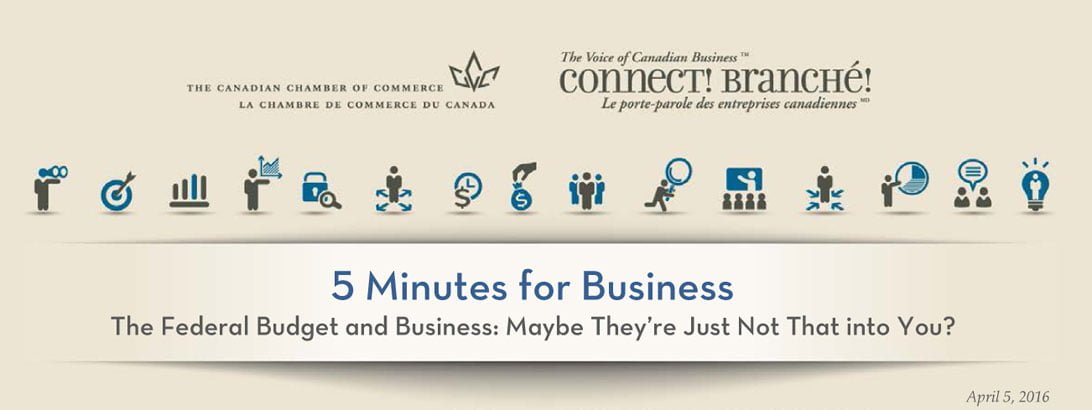Last week, we published our analysis of the 2016 federal budget, a report card based on business priorities and we awarded it a B-. We liked the investments in skills, the efforts to stimulate the economy and the focus on green technology. But we disliked the postponing of legislated reductions in the small business tax rates, the deficits and the focus on social goals rather than productive investments in infrastructure spending.
Since then, we’ve heard from a number of chambers across the country that perhaps we’ve been too generous with our grading. A Bloomberg reporter told us that the importance of business has plummeted, pointing out that the word “business” appeared 622 times in last year’s Conservative budget. This year, just 87 times. So has business become an afterthought?
The biggest challenge for grading the agenda is that in so many ways, this is the “wait and see” budget. Like a lovelorn Taylor Swift, the business community deperately wants to spend time with a stronger economy, but is waiting by the phone, hoping the government will pay attention to it.
On infrastructure, we, alongside every economist in the country, had been urging the type of trade-enabling investment that will boost productivity, such as roads, bridges, ports and digital infrastructure. Instead, the government announced $11 billion for public transit, water, green infrastructure projects and social housing (including cultural and recreational infrastructure). What happened to the stuff business wanted?
The government said Phase 2 of the infrastructure plan, which contains the “fast, efficient trade corridors that allow Canadian exporters to benefit fully from international trade” will be announced in the next year. So we’ll have to wait and see.
$2.26 billion of funding was announced for innovation, but almost all of it is destined to universities and colleges. The private sector was hardly mentioned, a challenge because Canada lags in commercialization, in venture capital and in growing technology businesses beyond a certain size. But the government will launch its Innovation Agenda, a “bold new plan” to redesign how it supports innovation, in 2016. Again, we’ll wait and see.
On taxes, we were disappointed that the reductions in the small business tax rates were deferred, which will cost small business almost a billion dollars. How long until we see these tax cuts? We’ll wait and see.
The government also announced that it will undertake a review of the tax system, with a view to eliminating poorly targeted and inefficient tax measures. We’ll wait and see what that will look like.
What about pensions? What about health funding? The government is consulting with the provinces so we’ll wait and see.
To be fair, the government has only been in office for 150 days. Imagine if it had announced an innovation strategy just two months in, as if it had it all figured out. That would be far worse.
Unlike Taylor Swift, we won’t just wait by the phone. Nor should you. We want to work with the government to make the private sector and commercialization the central part of its Innovation Agenda and to ensure we get the infrastructure we need to make Canada more competitive.
For more information, please contact :
Hendrik Brakel
Senior Director, Economic, Financial & Tax Policy
613.238.4000 (284) | hbrakel@chamber.ca



